When it comes to gardening, you must figure out how to give your plants just the correct amount of water, sunshine, and healthy soil to help them flourish. It is also about giving in to your passions, so choose plants you are enthusiastic about. Using these resources as a starting point, you’ll have a stunning garden in no time. Inexperienced gardeners are frequently frightened by the work necessary to develop and maintain a garden.
You will discover answers and guidance for essential gardening jobs here, ranging from trimming shrubs to adding high-quality organic matter to your soil. Below we will learn about Georgia, Atlanta backyard gardening, what and when to plant in Atlanta, home gardening in Atlanta, the best fruits, vegetables, flowers, and herbs to grow in Atlanta, planting zones of Atlanta, and a step-by-step guide to growing plants in Atlanta.
What are the USDA hardiness zones/ planting zones of Atlanta?
Regarding climatology, Atlanta and its surrounding region are classified as a humid subtropical climate; this means that there are four distinct seasons, with hot, humid summers and mild winters that are sometimes chilly by the norms of the southern United States. Long, hot, and humid are the defining characteristics of each summer.
In July, the daily average temperature is 80.2 degrees Fahrenheit (26.8 degrees Celsius), with temperatures sometimes reaching 100 degrees Fahrenheit (37.8 degrees Celsius), mild breezes, and normally a 20–40 percent chance of afternoon thunderstorms.
The month of August has a daily average temperature of 78.4 degrees Fahrenheit (25.6 degrees Celsius), with temperatures sometimes exceeding 100 degrees Fahrenheit (37.8 It is possible for temperatures to quickly dip below 85 degrees Fahrenheit or 29.4 degrees Celsius during the afternoon thunderstorms that occur throughout the summer months.
Temperatures in January average 43.3 degrees Fahrenheit, which is 6.3 degrees Celsius; however, the suburbs have somewhat lower temperatures. Temperatures at night can drop to between 20 and 10 degrees Fahrenheit (6.7 and 12.2 degrees Celsius) if powerful Arctic air masses are present. At the same time, springlike conditions can be brought on by warm, marine air.
The metropolis and inner suburbs don’t get snow every season, but the northern metro does. There have been just three measurable snowfalls outside of these months in the previous ninety years. Atlanta, Georgia, is situated in USDA Hardiness Zones 7b and 8a. When snow falls, it nearly invariably occurs between December and March. Atlanta is in USDA Hardiness Zones 7 and 8a and 8b.
Temperatures typical throughout the winter in 8a vary from 10 degrees Fahrenheit to 15 degrees Fahrenheit, whereas those in 7b range from 5 degrees Fahrenheit to 10 degrees Fahrenheit. Heat Zone 7, which is often similar to our USDA Cold Hardiness Zone 1, encompasses most of the Atlanta metropolitan area, which works in the region’s favor. Heat Zones Map Provided by the AHS The zones in which the plant can flourish is often listed on the label attached to the plant.
According to our previous experiences, if the information label on the plant you are considering indicates that it is hardy in Zone 7, then it will most likely be able to weather our winter without any significant problems. Atlanta and its metropolitan region have humid subtropical climates, with hot, humid summers and chilly, sometimes cold winters. The city and its suburbs are in USDA Plant Hardiness Zone 3.
Atlanta backyard gardening: A step-by-step guide to growing plants in Atlanta backyards
Select an ideal location for your backyard
When it comes to ripening, most fruits and veggies need full sun and a minimum of 5 hours of direct sunshine daily. In partial shade, leafy greens, herbs, and root vegetables can thrive. Gardens in the south could do better with little shade in the late afternoon, but gardens in the north probably need as much sunlight as possible. Consider how you will reach the garden to harvest, rinse, and tend to your plants.
When something is hidden from view, it is easy to forget, resulting in a neglected garden. Steer clear of places with a lot of wind and pockets of frost. Be wary of wild animals, the potential for harm from pets, and places designated for children to play. When we initially moved into our house, the dog that belonged to our new neighbor would sometimes come over and run through the garden. This made it exceedingly difficult for the young seedlings. Now that the dog is gone, the wild rabbits and deer visit, so we must adjust our plans appropriately.
Prepare the soil in your backyard
Springtime is the best time to do any work that involves the soil. If planting directly into the ground instead of in containers, you should check the soil’s moisture content by taking a handful. Apply some hand pressure on it, then release. If it crumbles, you’re good to go. It is a sign that the substance is overly moist if it retains its clumpy form. Loose, but neither powdery nor dusty, describes an excellent garden soil.
To break up the earth, you may use a shovel. Make an effort to dig down between 10 and 12 inches. To turn the soil, stick the blade of the shovel into the ground and either spin the blade or lift the shovel. It should be done across the whole garden. Using a rake or a hoe, break up the clods and clumps of soil. Take away the huge rocks and sticks.
In case you missed it: Best Fertilizer for Grapefruit Trees: Organic, NPK Ratio, How and When to Apply
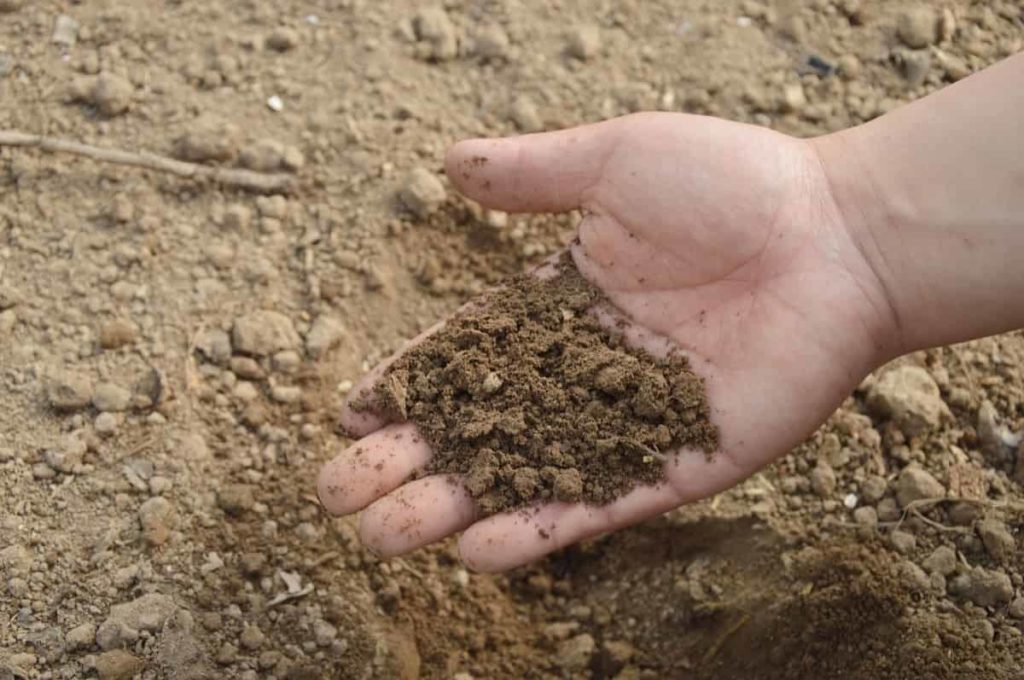
Organic materials improve the soil. It enriches the soil with nutrients and breaks up compacted ground. It improves the soil’s ability to keep water and makes it simpler to work. Sandier soils tend to benefit the most from this. The following are the most frequent types of organic matter: Compostable plant matter, such as freshly chopped leaves, grass clippings, or straw. They require months to decay before planting.
The excrement of cows, chickens, or rabbits, among other animals. If you are going to plant in the spring, you should use older manure that has been composted. Before you plant anything, cover the soil with a layer of composted manure about one inch thick and thoroughly incorporate it into the ground.
Decomposed plant material turned into compost. Compost is readily accessible to residents in many cities and municipalities. Leaves and tiny bits of wood that have been gathered from residential yards are often the primary components of compost. Spread it to a thickness of one inch and then work it into the ground.
Start planting your backyard garden
Seeds can be immediately sown into the ground where they are intended to grow. Certain plants can only be grown from their seeds. The plant you desire to grow will determine whether you should transplant or sow the seedlings directly. If the soil is prepared, make a furrow in the center of the raised bed using your finger or a tiny stick. It is recommended that the length of your furrow be at least twice as wide as the seed.
Place the seeds in the furrow, then cover them with the surrounding dirt. Ensure that you follow all instructions on the seed packaging before planting your seeds. If you do not have a seed package, dig a furrow that is half an inch deep. Sprouting or germinating certain vegetable seeds can take up to several weeks. The initial step in the development of a plant is called germination. Maintain a moist but not soaked condition in the soil.
The seeds can be washed away if there is an excess of water. After the seedlings have germinated and grown, you should assess if the plants are too near and trim them out as necessary. When you thin a planting, you remove the less robust plants by plucking them out or pinching off the tops. This helps ensure that the remaining plants are as equally spaced as possible. The recommendations on the seed packaging should be followed regarding the distance between each seed.
Instead of using a seed package, imagine how big your plant will grow and set your seed spacing accordingly. Put a stake with a label in the furrow to mark its location. Plants that will not be sown directly but will be transferred arrive in their separate cells or pots. High-quality transplants have well-developed roots firmly encircling the potting soil in which they are housed.
Check whether the plants have received recent watering before attempting to transplant them into your garden. The potting soil must be damp. Do not attempt to transplant on days when there is a lot of wind or when the temperatures are high. When it comes to transplanting, a day with overcast skies or later in the afternoon, after the sun’s hottest part of the day has passed, is ideal.
Another option is to transplant early morning, while the temperature is still relatively chilly. Make a hole in the ground with a trowel or a little shovel. You can use your hand to move the soil if it is loose. When it comes to the hole size will be determined by the transplants. You are interested in the full root.
Start watering your backyard garden
The majority of vegetable crops need around 1 inch of water per week. Without rain, your garden will need that you water it yourself. Put your finger down into the dirt about one to two inches deep towards the base of a plant, about one to two inches away from the stem. This will tell you whether or not your plants need to be watered. Perform this action in a few different spots across the garden.
The top layer of the soil may be dry, but the deeper layers are still wet. It’s best to water if the soil is lacking in moisture. When you water the plant, direct your attention to the roots rather than the leaves or the upper section of the plant. It is not the leaves but the roots that absorb the water. Newly transplanted crops may need more regular watering to facilitate their establishment in the soil.
In case you missed it: How to Grow Plants in Water – A Beginners Guide
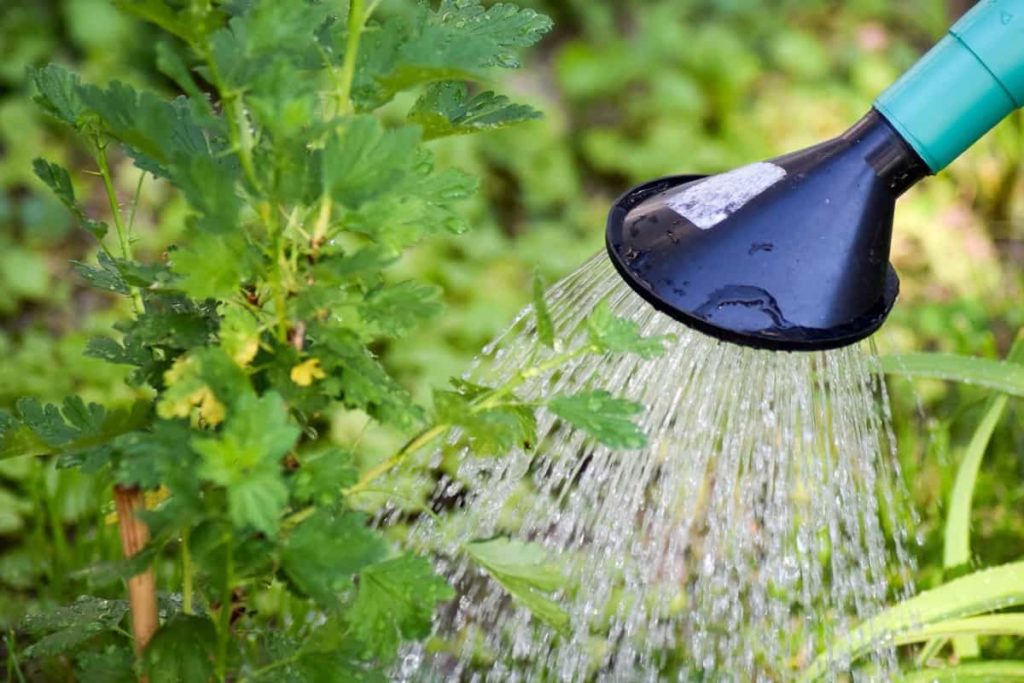
Drooping or sagging leaves indicate that the plant suffers from dehydration and should be given more water. Before the temperature rises, water your garden with a sprinkler or garden hose. Preventing overwatering and evaporation of the leaves can help plants absorb water before they get stressed, allowing for a longer time for water to roll off or evaporate. If the leaves continue to be moist for a longer period, there is a greater chance that they may get infected with fungal diseases.
Fertilizing your backyard garden
It is possible that you may not need as much fertilizer throughout the growing season if you decide to include manure or compost in your soil during the preparation stage. If you did not work manure into the soil before planting your seeds, you would need to apply fertilizer of some kind to ensure that your plants get the nutrients they need. You can get commercial fertilizers in shops that provide farming supplies or home improvement materials.
Nitrogen (N), phosphorus (P), and potassium are the three primary nutrients that are supplied by the vast majority of fertilizers (K). On the bag, they will be listed in this sequence, which will never change: N, P, and K. Avoiding soil testing is as simple as applying roughly 12 pounds of 33-0-0 fertilizer to every 100 square feet of the ground instead. You can substitute urea if you cannot get this particular fertilizer (46-0-0).
Granules are the standard delivery method for any kind. Utilize a cup to distribute the fertilizer around the area you want to plant as evenly as possible. Utilizing a shovel and a rake, work the fertilizer into the soil until it is completely incorporated. After handling fertilizer, you should wash your hands well or wear gloves.
Manage the weeds in your backyard
Your garden plants will have to struggle with weeds for available water and nutrients. If weeds are allowed to get too large, they may shade other plants from the sun and attract some illnesses or insects that feed on plants. Preventing weeds from developing seeds is the best weed control approach. Pulling weeds by hand or with a garden hoe is easier when the weeds are still relatively small.
If feasible, you should attempt to eliminate the weed, including its roots. After you have plucked the weeds, you should eliminate them from the area around the garden. Even after the weed has been taken out of the garden, it is possible for it to re-root itself or for its seeds to germinate and produce new plants. The use of mulch can also assist in weed prevention. Using mulch in the spaces between plants provides shade for the soil, which in turn helps inhibit the growth of weeds.
Mulch can be made from various materials, such as grass clippings or leaves. It is important to shred large leaves, so they do not create a barrier to water flow on the soil’s surface. Newspaper and cardboard are examples of paper products that work well as mulch. These mulches will provide organic matter to the soil if they are put under a shovel after the growing season.
Pest and disease management in backyard gardening
Prevention is the most effective pest management method in organic gardening, like in many other aspects of life. No crop should be grown on the same site for three years. This will maximize the yield of your garden. You should not only prevent the same plant from growing in the same spot but also prevent other related plants from growing there. This can help plants escape diseases and bugs that gather around their roots.
In addition to this, it is a good idea to cultivate as many different types of crops as you are capable of tending to. Because pests spread more slowly via various plantings than monocultures, having a diversified crop mix protects you from losing all of your harvests in the event of a pest infestation. Utilizing plant strains with genetic resistance to a certain pest or disease is another tried-and-true method for preventing pest issues.
When you purchase seeds or transplants, check the seed packets and the labels on the transplants for any claims that they are resistant to disease or pests. Despite what you may have believed, resistance to disease and pests is not often the product of genetic engineering. Rather, it is typically the outcome of plant breeding practices that have been used for hundreds of years. The use of floating row coverings and the use of transplants are two additional methods of protection against insect pests.
A physical barrier and establishing circumstances beneath the cover that are unfavorable for the growth and reproduction of insects allows floating row coverings to keep unwanted pests away from the crops they cover. By keeping plants in your house or greenhouse until they are big enough to defend themselves against pests, you increase the likelihood that pests will not destroy your plants.
Using transplants does not keep pests away from your crops. Most plants have minimal defenses while they are young, but their stems get thicker as they mature, making them less tasty to insects. They can produce bitter or otherwise unpleasant compounds in reaction to insect-eating. In addition to this, their resilience to disease improves.
If, despite implementing the numerous preventive strategies described earlier, you are still dealing with issues caused by insects or other pests, certain substances can be used as organic pesticides. It is important to remember that these chemicals are not the same as some of the conventional insecticides you may have used in the past. Suppose they are suitable for use in organic production. In that case, this indicates that they are less hazardous to your health or degrade more rapidly in the environment when compared to normal pesticides.
Larvae, which are worm-like animals, as opposed to adult insects, are the only stages of an insect that are susceptible to being killed by most of these compounds. In addition, most of these chemicals are only effective for a few days after application before being destroyed by the elements such as sunshine, rain, or even simply being exposed to the air.
When is the time to plant in Atlanta?
You can add a splash of color to your flower beds by planting daisies in January if the weather is warmer by the month’s end. Broccoli, cabbage, Leafy greens, radishes, and turnips can be planted for a mid-January harvest. Sweet peas can be planted in February to yield a fragrant harvest later in the year. Try winter daphne as well for beautiful, aromatic flowers.
If you plant vegetables like English peas, onions, and garlic now, they’ll be ready for harvest by spring. Start planting your spring garden in March with various root vegetables, such as beet and radish crops, and a turnip. Pruning, aerating, and fertilizing your Atlanta lawn may also be done at this time. During April, Since the soil is warming, plant tomatoes and peppers.
Plant some Easter lilies to celebrate the arrival of spring. They’ll smell as good as they look when they bloom. Zinnias and cosmos can be enjoyed in early summer if you sow their seeds before the month’s end and then water them regularly. Begonias and petunias, which bloom in May and last through the summer, are excellent additions to any garden. Cooking with fresh herbs or garnishing a salad with them is a favorite pastime.
Growing herbs like basil, oregano, rosemary, and dill is a good idea now. Plant extra veggies this month, such as beans, peas, and squash, to expand your culinary possibilities. For June, it’s all about weeding, fertilizing, and harvesting some of your crops. You should be harvesting veggies and flowers from your early plants by now. Garden beds should be mulched, and lawns checked for problems like brown patches and dollar spots.
Maintain a weekly watering schedule for your yard. This is an excellent time to put Bermuda or Zoysia sod if you have barren places. Continue your hard work by spending on pruning and weeding. It’s time to start thinking about autumn planting, even if it’s still scorching outside in August. By the middle of September, you should begin planting autumn veggies like broccoli, collards, and cabbage.
When it cools down, plant trees and bushes. All forms of planting take place in October. Aeration and overseeding of your Fescue lawn are also good options now. During winter, plant pansies 8 inches apart and enjoy their beautiful blooms. Prepare spring flowers in mid-month. Bring the outside in with spring-flowering bulbs. If you missed October, you could plant spring bulbs in November.
Flowers such as tulips and daffodils are lovely choices for arrangements. Trees and bushes can also be planted in November since the earth is still warm. During December, water your newly planted shrubs and trees and prepare your grass for the expected temperature dip. To shield your plants from the changing seasons, you should bring part of them indoors.
Best vegetables to grow in Atlanta backyards
Many vegetables can be grown in Atlanta backyards, such as broccoli, cabbage, beets, okra, mustard, onions, radishes, carrots, collards, lettuce, tomatoes, potatoes, spinach, collards, turnips, cabbage, turnips, mustard, and kale.
Mustard greens: Large, vivid yellow blooms adorn the long stems of this 3-foot-tall perennial. The plant produces curving green pods that resemble pea pods. It is possible to produce mustard greens all year round in Georgia, depending on the area, as long as they receive full light and constant moisture in the soil. During the winter months, they are grown in the south, while in the spring and summer, they are grown in the north, east, and west.
Beets: Despite its appearance as a landscape plant with long, wide leaves that may be used to garnish various meals, this plant has several culinary uses. When planted in full light and moist soil, beets can grow to 4 feet tall with leaves over 2 feet long. The plant is covered with bright green and red blossoms during the growth season. Colorful beets aren’t the only kind of beets available; they can also be found in white, pink, yellow, or striped varieties.
In case you missed it: Detroit Backyard Gardening: How to Start with Vegetables, Flowers, Herbs, and Fruits at Home
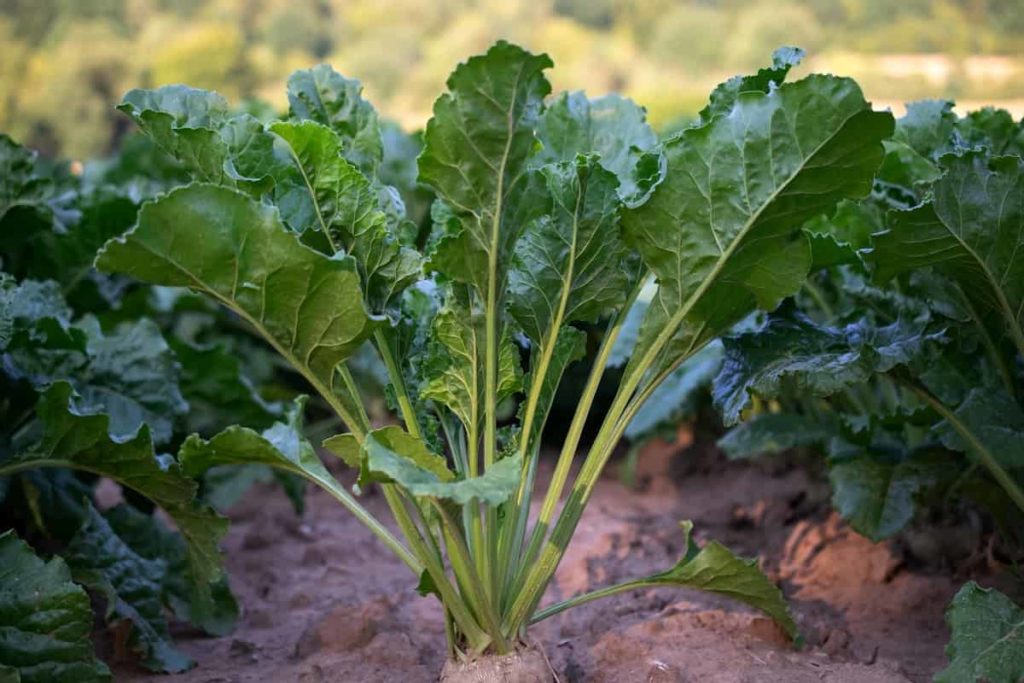
Parsnips: As a butterfly attractant, this vegetable grows well in Atlanta’s cold winters. Parsnips need a steady supply of water, full light, and a lot of space since their roots may grow up to 2 feet in length.
Cabbage: Cabbage, on the other hand, flourishes in the mild spring and autumn climate of Atlanta. The best time to plant and harvest cabbage is early spring before the weather becomes too hot.
Kale: The toughest vegetable to grow in Atlanta’s spring and autumn is kale. It is the only vegetable on this list that can be grown at any time of year, and that’s because it is Kale. On this list of vegetables, kale is the only one that may also be called an attractive plant. If you have a garden, it can provide color, characteristics, and beauty.
Best fruits to grow in Atlanta backyards
Various fruit trees can be easily grown in Atlanta backyards, like peaches, persimmons, pear trees, apples, apricots, figs, plums, and espalier fruits.
Peaches: Even though the Southern Live Oak is Georgia’s official state tree, the peach tree is unquestionably the most well-known of the state’s trees, thanks to the world’s love affair with sweet, juicy Atlanta peaches. Peach trees in Atlanta are a no-brainer for arborists and homeowners because of their capacity to withstand harsh winters and produce some of the most delicious peaches in the world.
Persimmons: As a native of Georgia, persimmon trees may yield their orange-brown fruit after five to seven years, making them a good option for growing in Atlanta. Wild persimmons can grow beside highways and in defunct fields throughout Atlanta. Persimmon trees can tolerate 20-25°F, making them suitable for Atlanta’s winters. Persimmon trees come in a wide variety of varieties. Persimmons cultivars can be grown in the Atlanta region, including Miller, Killen, and Even Golden.
In case you missed it: Growing Persimmons in Containers from Seed, Seedlings
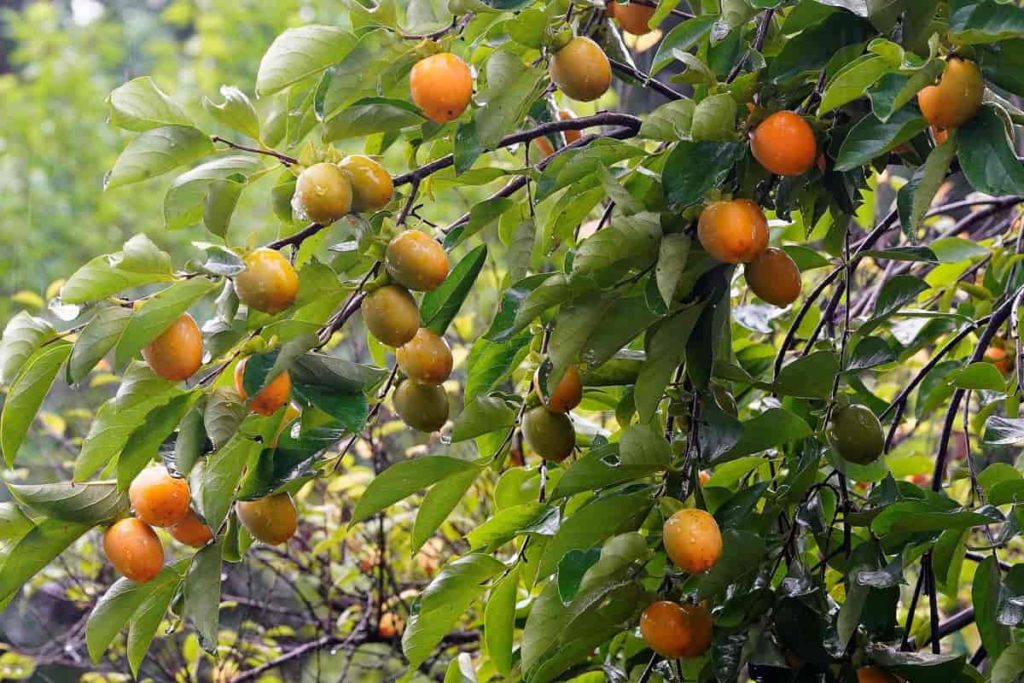
Pears: Even in Georgia, where the winters can be harsh, pear trees can survive for over 50 years and continue to bear fruit. In the Atlanta region, Bartlett pear trees are a popular European, but you might also choose a European or Asian pear tree.
Apples: The only drawback of growing apples in Atlanta is that it might take up to 8 years for the trees to bear fruit after they are established. Because of the high humidity, Atlanta is an ideal location for these robust trees. Try planting apples like Ozark Gold, Jonagold, Golden Delicious, Ginger Gold, Fuji, and Granny Smith if you live in the Atlanta region.
Apricots: As you would expect, Atlanta’s high temperatures and humidity make apricots sweet and juicy. At the same time, growing apricots in Atlanta, late frosts, and lower winter temperatures should be considered.
Best flowers to grow in Atlanta’s backyards
A wide range of flowers can be grown in the backyards of Atlanta, such as Coneflowers, daisies, black-eyed Susans, sunflowers, petunias, begonias, impatiens, pansies, daffodils, dahlias, sun patients, and other flowers.
Shasta daisy: This vibrant perennial is a time-honored favorite. It can bring to mind some of the wild daisies you have seen growing along the roadside. It is comparable to them, but it matures at a greater size and produces blooms of more robust quality. Shasta daisies often produce blooms in clusters between one and three feet tall and one and two feet wide.
Purple coneflower: A perennial flower known as the purple coneflower, this plant may be found across most of the eastern United States. They will entice a large number of bees and butterflies with their pistils. These carefree flowers are a breeze to nurture into bloom. There are occasions when stalks reach a height of five feet!
Petunias: Petunias are popular since they’re easy to grow and come in many colors and varieties. These are ideal for planters and other containers, but select varieties can also function as ground cover.
Begonias: Whopper begonias have blooms that are a brilliant shade of red. They are known as whoppers because of the enormous clusters of large flowers they produce during the summer.
In case you missed it: Colorado Container Gardening: Guide for How to Start with Vegetables, Fruits, Herbs, and Flowers at Home for Beginners
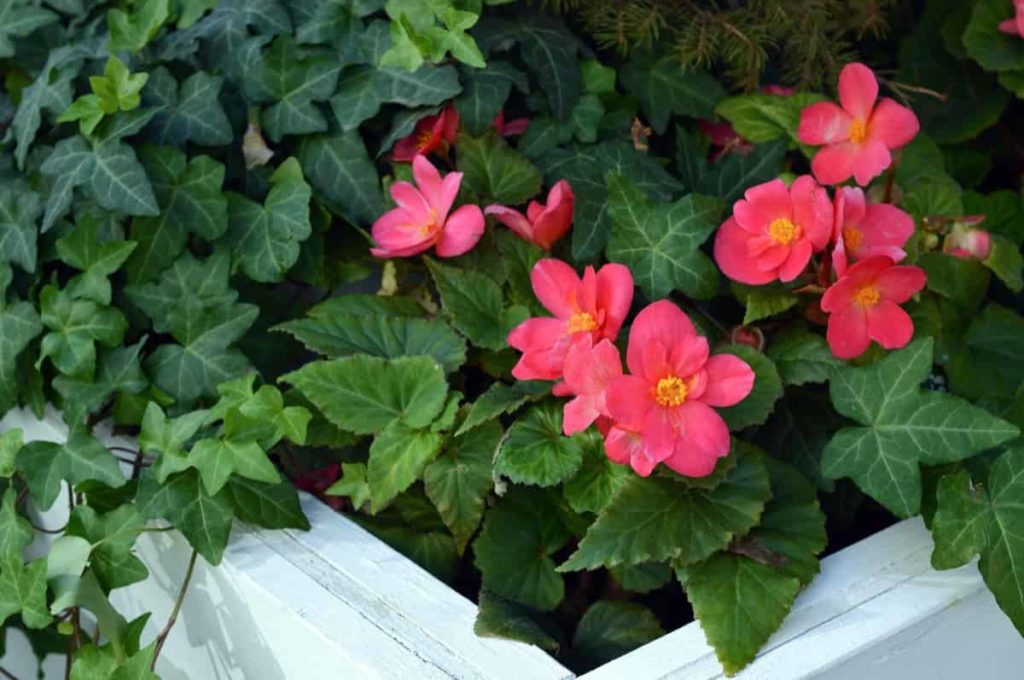
Daffodils: Everyone likes a yellow daffodil. When you have finished planting the bulbs in late fall, you can see these blossoms emerge from the earth in early spring. Depending on the type, they can bloom once a year for six months.
Best herbs to grow in Atlanta’s backyards
You can grow many herbs in Atlanta backyards, such as basil, oregano, thyme, winter savory, sage, parsley, chives, rosemary, mint, and other herbs.
In case you missed it: Dallas Backyard Gardening: How to Start with Vegetables, Flowers, Herbs, and Fruits at Home
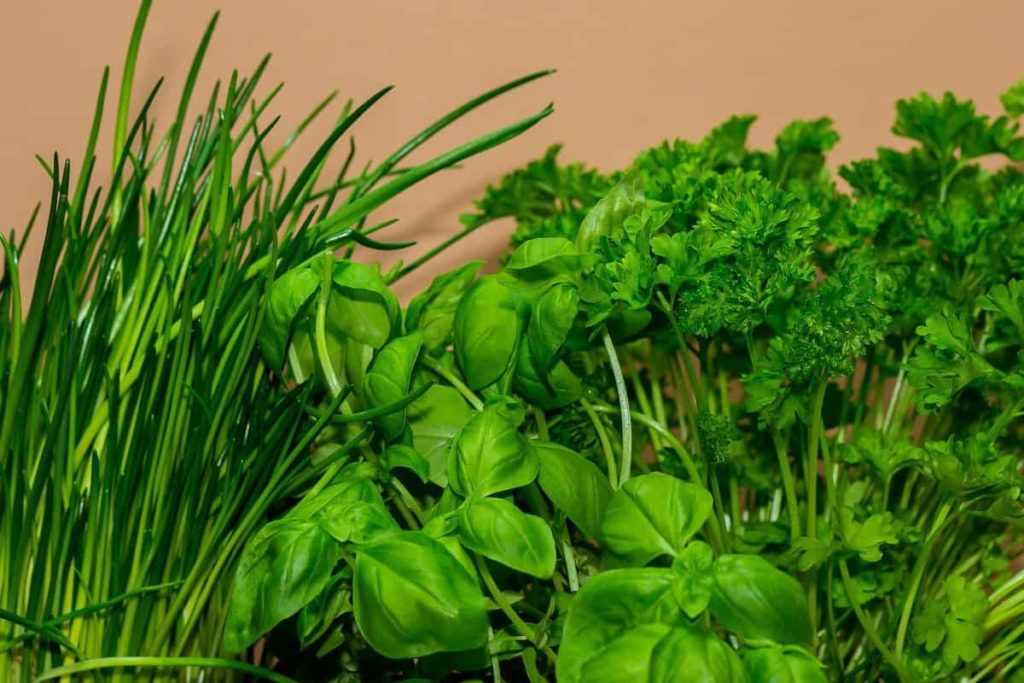
Basil: Plants that love the sun will do very well throughout the summer months. If you pick the leaves before any flowers form, the plant will be able to concentrate on generating new leaves that are edible rather than flowering. This can be accomplished by watering the plant’s base as required and harvesting the leaves. Pick as much as you need, but always leave at least a third of the plant intact so it can continue to develop.
Mint: Most mint plants thrive when they get early light, afternoon shade, and the soil drains properly. However, there are wide varieties of these plants; thus, you must verify the guidelines for your particular kind. Once it has reached a healthy and robust growth stage, harvest it regularly and before flowering.
Chives: Chives are another kind of plant that thrives in full sun and like wet soil but has good drainage. They will produce pink blooms that will disseminate their seed if they are not plucked regularly.
Thyme: Growing anything from seeds may be challenging; to get a head start, try growing it from cuttings instead, or just purchase the plant and repot it. It grows best on somewhat alkaline soil, has adequate drainage, and is exposed to full sun. During the spring and summer, prune as much as is necessary, but during the winter, when growth is more sluggish, reduce the amount. Before usage, ensure the plant is hung so the stems are facing down, and remove the leaves.
Sage: Sage is a hardy plant that can flourish in virtually any environment; nevertheless, it achieves its full potential when exposed to a significant amount of sunshine. Hold off on watering the soil until it has completely dried up, and take cuttings of the plant only when you need to. The leaves will still have a robust flavor even after it has flowered.
Conclusion
The best and most satisfying thing you can do for your garden is provide the proper care and attention that its plants need. Spend time removing spent flowers, weeding, pruning, and cleaning your garden. If the plant seems to grow abnormally slowly, you should investigate the situation at its roots by carefully inspecting the underlying soil and digging about it. Taking the necessary precautions can rid yourself of diseases and vermin.
Maintain a consistent routine of providing your plants with water and nutrient-rich food every so often. As you can see, establishing a backyard garden is not quite as daunting a task as it would first seem. Even if you’re not an expert gardener, you can have an annual blooming garden if you plan, pick your plants carefully, and enrich the soil. If you follow the factors mentioned above and take care of your backyard garden in Atlanta, then having a successful backyard garden is a breeze.
- Gardening Techniques in Planting Vegetables
- Where to Place Indoor Plants in Your Home
- How to Grow Tomatoes Organically at Home: A Comprehensive Guide
- Organic Gardening on a Budget: Low-Cost Methods and Materials
- Gongura Seed Germination and Planting Methods
- Cabbage Seed Germination and Selection
- Broccoli Seed Germination and Selection
- Asparagus Seed Germination and Variety Selection
- Seasonal Flower Gardening: Best Practices for Spring, Summer, Fall, and Winter
- How to Grow Hibiscus from Flower
- Plantation Ideas for Home Decoration: A Beginners Guide
- Flower Garden Designs and Layouts for Beginners
- Planting and Spacing Techniques in Papaya: A Beginner’s Guide
- Growing Gold: Essential Techniques for Planting Pineapples
- How to Make Kalanchoe Plant Bushy: Home Remedies and Solutions
- 11 Reasons Why Your Gardenia is Not Blooming: Home Remedies and Solutions
- Eco Elegance: The Guide to Designing a Drought-Tolerant Landscape
- Gardening on a Slope: Strategies for Hillside Landscaping
- Nourish and Flourish: Top Organic Mulches for Thriving House Plants
- Everything You Want to Know about Indian Mogra Flower: Discover Uses and Growing
- Green Thumb Success: Expert Tips for Cultivating Greenhouse Pumpkins All Year Round
- Maximize Growth & Flavor: The Ultimate Guide to Companion Planting in Herb Gardens
- How to Control Rhododendron Problems Naturally: Home Remedies and Organic Ways to Fix Them
- Natural Magic: The Remarkable Benefits of Cinnamon for Plants
- Best Steps to Revive Dying Tulip with Natural and Organic Treatment
- 10 Reasons Why Your Angel Trumpet is Not Blooming: Remedies and Treatment
- How to Fix Periwinkle Leaf and Flower-Related Problems: Natural Remedies and Solutions
- How to Fix Zinnias Leaf and Flower Problems: Discover Natural and Home Remedies
- Organic Steps to Induce Lemon Tree Flowers: A Comprehensive Guide
- Bloom Booster: Crafting the Perfect Homemade Bougainvillea Fertilizer
- Optimizing Growth: A Guide to Applying NPK Fertilizer for Potted Plants
- 10 Best Homemade Fertilizers for Rubber Plant: DIY Recipes and Application Method
- How to Boost Female Pumpkin Flowers: Effective Steps for More Flowers and High Yields
- Transform Your Indoor Garden: Top Benefits of Pink Salt for Houseplants
- 10 Best Homemade Fertilizers for Peacock Plants (Calathea): Easy DIY Guide
- Unlock Blooms: 9 Reasons Why Your Potted Chrysanthemum is Not Blooming